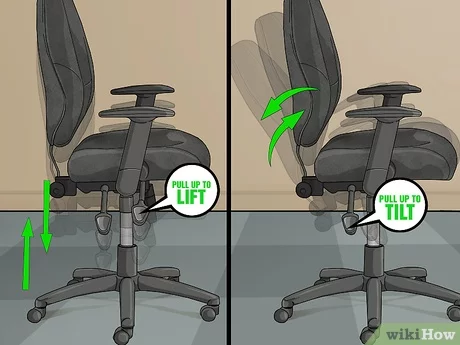If you’re spending long hours sitting at your office desk, it’s important to make sure your chair is comfortable and ergonomic. One important aspect of a comfortable office chair is the seat angle. If the angle is too steep or too shallow, you may experience discomfort or even pain in your back, neck, and shoulders. In this article, we’ll guide you through the process of adjusting the seat angle on your office chair, step by step.
Understand Your Chair’s Adjustments
Before you start adjusting your chair, it’s important to understand the different adjustments available. Most office chairs have two primary adjustments that affect the seat angle: the seat height and the tilt adjustment. The seat height adjustment allows you to raise or lower the height of the chair, while the tilt adjustment allows you to adjust the angle of the seat itself.
Adjust the Seat Height
The first step in adjusting the seat angle is to make sure the seat height is correct. To do this, sit in your chair with your feet flat on the ground and your knees at a 90-degree angle. Adjust the seat height so that your hips are level with your knees. This will help you maintain good posture and reduce strain on your back and legs.
Adjust the Tilt Angle
Once you’ve adjusted the seat height, it’s time to adjust the tilt angle. Start by sitting in your chair with your feet flat on the ground and your knees at a 90-degree angle. Then, use the tilt adjustment to adjust the angle of the seat. You want the seat to be level, or slightly angled forward, so that your hips are higher than your knees.
Fine-Tune the Angle
After adjusting the tilt angle, take a few moments to sit in the chair and assess your comfort level. If the seat still feels too steep or too shallow, make small adjustments to the angle until you find the right position. Remember, the goal is to have your hips higher than your knees, with your weight evenly distributed on your buttocks and thighs.
Use a Footrest if Needed
If you find that even after adjusting the seat angle, your feet still don’t reach the ground, consider using a footrest. A footrest can help reduce strain on your legs and feet and improve your overall posture.
Tips and Tricks for Adjusting Your Office Chair
- If you’re unsure about how to adjust your office chair, consult the manufacturer’s instructions or ask your HR department for guidance.
- Make sure to take frequent breaks and stretch throughout the day to avoid discomfort and fatigue.
- Consider investing in an ergonomic office chair that is designed to support good posture and reduce strain on your body.
Frequently Asked Questions
How do I know if my seat angle is correct?
Your seat angle is correct if your hips are higher than your knees and your weight is evenly distributed on your buttocks and thighs.
What if my feet don’t reach the ground after adjusting the seat angle?
Consider using a footrest to reduce strain on your legs and improve your posture.
Can I adjust the seat angle on any office chair?
Most office chairs have some form of tilt adjustment that allows you to adjust the seat angle. Consult the manufacturer’s instructions or ask your HR department for guidance.
Conclusion
adjusting the seat angle on your office chair is a simple but important step in maintaining good posture and reducing strain on your body. By following the step-by-step guide outlined in this article, you can ensure that your chair is comfortable and ergonomic, allowing you to work more productively and comfortably throughout the day.
